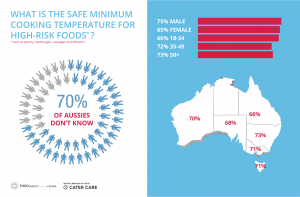So what about those lab made meats?
There have been quite a few stories on the news over the last year about meat patties made in the lab and not coming from any animal.
It is controversial and many may think twice about eating any products made from it, but it will be a part of our future, as it can be potentially be produced in vast quantities economically with a significantly reduced environmental impact than meat from animals and poultry.
The issue at the moment is about what controls, and particularly food safety controls, are in place, or will be, to manage this new form of food.
The first question which needs to be anaswered is simple – is it actually meat?
This is where the law must rapidly adjust to include this material and the increasing the definition of what is meat is part of that change.
The material is made from the cells of meat animals so it does fit into the general definition of meat. The cellsare collected and then cultured in the lab and meat is produced as a result It can be red meat or poultry, the process is the same.
One of the problems in the USA has been in detrmining whether the meat is under the jurisdiction of either the US Department of Agriculture (USDA) and the Food and Drug Administration (FDA).
It has been formally agreed that both of theses departments will share the regulatory responsibility for this new material. The agreement covers all aspects from development to commercial production and lays out which department has oversight and responsibility at which stage.
The FDA will be responsible for the collection, banks, growth and differentiation of the cells, and then the USDA will take over oversight for the production of human food products, including labelling.
Frank Yiannas, FDA Deputy Commissioner for Food Policy and Response, said; “We recognise that our stakeholders want clarity on how we will move forward with a regulatory regime to ensure the safety and proper labelling of these cell-cultured human food products while continuing to encourage innovation. “Collaboration between USDA and FDA will allow us to draw upon the unique expertise of each agency in addressing the many important technical and regulatory considerations that can arise with the development of animal cell-cultured food products for human consumption.”


